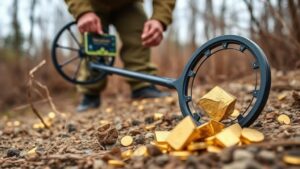Recovering Precious Metals From Natural Rock Grooves in Canyons
Recovering Precious Metals From Natural Rock Grooves in Canyons
Exploring the surfaces of canyons can reveal fascinating geological features, including natural rock grooves that have geological and economic significance. Among these are deposits of precious metals such as gold, silver, and platinum. This article delves into the processes and methodologies associated with recovering these valuable resources from their natural settings.
Understanding Natural Rock Grooves
Natural rock grooves are formed by a combination of erosional forces, including wind, water flow, and glacial activity. e grooves can vary significantly in depth and width, creating a unique microenvironment that can lead to the concentration of precious metals. In many cases, these metals are washed down from higher elevations and settle within the grooves, making canyon systems important exploratory targets.
Geological Significance
From a geological perspective, canyons provide clues about the Earths history. The presence of precious metals indicates not only their geological age but also the processes that led to their concentration. For example, the Sierra Nevada mountains in California have well-documented gold deposits formed from hydrothermal activity. These processes can occur over millions of years, showcasing the dynamic nature of our planet.
Methods of Recovery
There are several techniques used to recover precious metals from rock grooves, ranging from traditional methods to more modern, technologically advanced processes. Each method has its applications based on the environment and the specific type of metal being targeted.
- Panning: This traditional method involves using a shallow pan to separate gold from other materials. Water is used to wash away lighter materials, allowing heavier metals to settle at the bottom, making panning an effective and low-cost option.
- Highbanking: This technique builds upon panning, incorporating a sluice box for increased efficiency. Highbankers can process more material in less time, making it ideal for larger deposits.
- Electrolytic Refining: Modern techniques like electrolytic refining use electricity to separate metal from ores. This method is especially useful for extracting silver and gold from ore that contains impurities.
Challenges in Recovery
Despite the potential rewards, recovering precious metals from canyon grooves presents challenges. Environmental regulations, safety concerns, and access limitations can hinder recovery efforts. Also, the processes involved can be labor-intensive and require significant upfront investment. It is crucial for recovery operations to adhere to legal standards to minimize ecological damage and ensure sustainable practices.
Case Studies and Real-World Applications
One noteworthy example of successful precious metal recovery is the discovery of gold in Californias Feather River Canyon. Prospectors historically used simple panning and sluicing techniques, leading to the famed Gold Rush of the 19th century. In recent times, mining companies have employed more sophisticated methods, integrating geological surveys and geophysical technologies to identify prime recovery locations.
Future of Precious Metal Recovery in Canyons
The future of precious metal recovery from canyon systems is promising, especially with advancements in technology. Researchers are exploring methods such as drone-assisted surveying and machine learning to forecast the locations of deposits more accurately. Plus, increased awareness of sustainable mining practices is motivating the industry toward more environmentally friendly techniques.
Actionable Takeaways
For individuals or organizations interested in exploring recovery options for precious metals from natural rock grooves, consider the following actionable steps:
- Conduct thorough geological surveys to identify potential sites before beginning recovery efforts.
- Stay informed about local regulations regarding mineral rights and environmental protection.
- Use a combination of traditional and modern methods to enhance recovery efficiency.
- Use sustainable practices to minimize environmental impact.
To wrap up, recovering precious metals from canyon rock grooves is an intricate blend of geology, technology, and environmental stewardship. With continued innovation and adherence to sustainability, the industry can thrive while preserving the natural beauty and integrity of canyon ecosystems.



